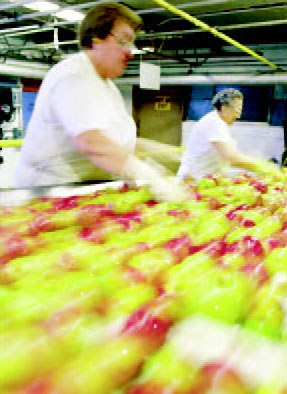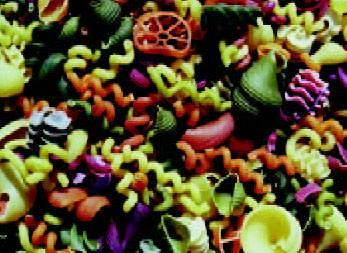|
Processed vs. Fresh | Safety Regulations
Industry's Progress | Fast Facts | Resources
|
|
Food processing is a $500 billion industry in the United States. America’s food processors offer a nearly limitless supply of foods, including fruits, vegetables, meat, fish, juices, and specialty items. These items are packaged in various ways to meet consumer demand for safety, convenience, and nutrition. The most widely used processing methods include canning, freezing, refrigeration, dehydration (drying), and aseptic processing (such as drink boxes). |
| Processed vs. Fresh: The Facts |
|
Many consumers mistakenly believe that fresh food is safer and more nutritious than processed food. Scientific studies demonstrate that processed foods are just as nutritious and safe. |
 |
Processed food ingredients are harvested when they are at peak freshness to “lock in” nutrients and improve taste. Fresh foods, on the other hand, often lose vital nutrients before they reach the consumer. Transportation time and poor storage conditions can sometimes cause fresh foods to lose nutrients.
Processing technologies are designed to rid foods of harmful bacteria that can cause illness. Heat treatments such as pasteurization rid juice and milk of dangerous organisms, including E. coli O157:H7 and Salmonella. A 1996 E. coli outbreak that sickened dozens of people was caused by unpasteurized apple juice. |
| Cooking and other heat treatments also make foods shelf stable (do not need refrigeration before opening) by destroying spoilage organisms. Industry takes effective steps to make sure their processing steps keep food safe. |
| Safety Regulations |
|
In addition to industry self-policing, the U.S. Food and Drug Administration (FDA) and U.S. Department of Agriculture (USDA) regulate processed foods. |
|
These agencies inspect food plants to ensure that foods are safe and are processed under sanitary conditions.
Some foods require special processing for safety. Natural acids in foods such as tomatoes inhibit harmful bacteria from growing. Companies that process low-acid canned foods (for example, green beans or mushrooms) must allow FDA to review their processing methods.
Meat, poultry, seafood, and juice processors are now required to use a food safety system called HACCP (Hazard Analysis and Critical Control Points). HACCP is a science-based, seven-step process that helps processors identify where foods may be contaminated in the process. Using HACCP helps companies prevent foodborne hazards. |
 |
| Industry’s Progress |
| America’s food processors strive to provide the world’s safest products. Working with the National Food Processors Association (NFPA), processors are making many scientific and technological advances. Each year, NFPA’s scientists conduct important research to improve processing safety as well as food quality. NFPA’s Food Processors Institute (FPI) also instructs food processing professionals on thermal processing methods and HACCP. |
| Fast Facts |
- According to FDA, 98 percent of juice on the market today has been pasteurized.
- The National Aeronautics and Space Administration (NASA) developed HACCP in the 1960s to make foods safe for space travel.
- FDA recommends that consumers purchase only pasteurized dairy products.
- Some food processors use state-of-the-art technologies such as irradiation to kill dangerous pathogens that occur in foods.
|
| Resources |
|
www.nfpa-food.org; www.fpi-food.org
(NFPA, FPI)
www.safefood.org
(NFPA’s consumer website)
www.cfsan.fda.gov/~lrd/bghaccp.html
(Food and Drug Administration) HACCP backgrounder |
Developed by the National Food Processors Association • www.nfpa-food.org |



